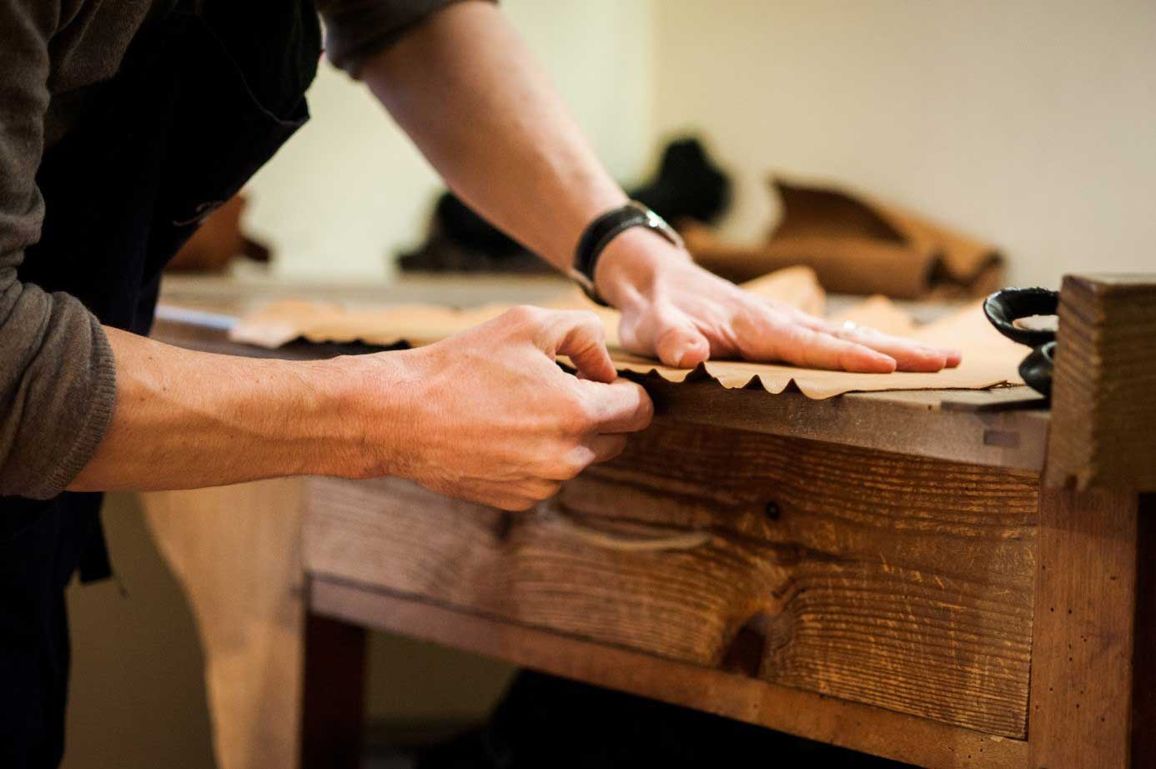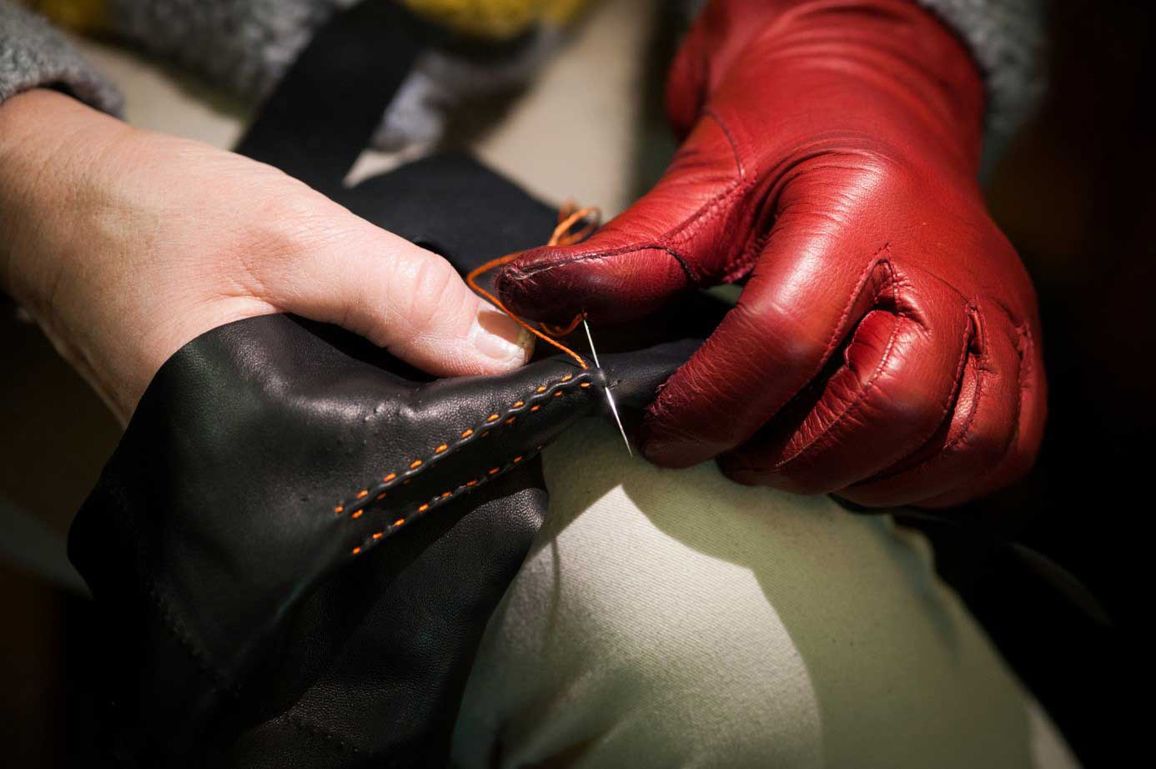Looking for expert advice before picking your next pair of leather gloves? As skilled artisans in the field, we’re here to share our insights so you can make an informed decision.
It’s true — for most people, it’s hard to tell the difference between high-quality gloves and others... especially since price alone isn’t a guarantee of quality. A glove can be expensive and still be poorly made. Many retailers take advantage of the complexity of leather and glove-making to sell low-grade or industrially produced gloves at premium prices.
Don’t be misled: three criteria are essential to identifying high-quality gloves: the leather quality, the stitching, and the lining.
Leather Quality
The quality of the leather is key, as not all leathers are created equal. First rule: avoid shiny, plastic-like finishes — they’re often signs of poor quality. For instance, lambskin should feel soft and pleasant to the touch.
One of the most crucial stages in glove-making is the "wetting" step. It involves moistening the leather and rolling it to ensure softness and flexibility. The skin is then stretched to prevent any slack after sewing.
When trying on leather gloves, they should feel snug at first. Leather stretches over time — in width, not in length. If they’re loose from the start, they’ll become too big. That’s why measuring your hand properly is so important before ordering.

The Quality of the Glove Lining
Whether lined or unlined, gloves should feel comfortable and fit snugly to your hand. Linings aren’t mandatory, but they do add comfort and warmth.
- Silk: thin, warm, slightly textured to grip your fingers. Perfect for mid-season wear.
- Cashmere: soft, thick, insulating — a winter essential, though delicate against moths.
- Rabbit: unmatched warmth and softness, often with a refined turned-back cuff.

Stitching Quality in Leather Gloves
For artisan gloves, be demanding about both comfort and finish. The seams should be on the outside to prevent rubbing on your skin. For a refined look, we use piqué anglais, a rare French stitching technique.
This dual-thread technique adds a leather triangle between each finger for durability and flair. Hand-sewn ridges enhance depth and elegance. The result: comfort, resilience, and effortless movement.
You now have everything you need to spot and choose truly high-quality leather gloves.